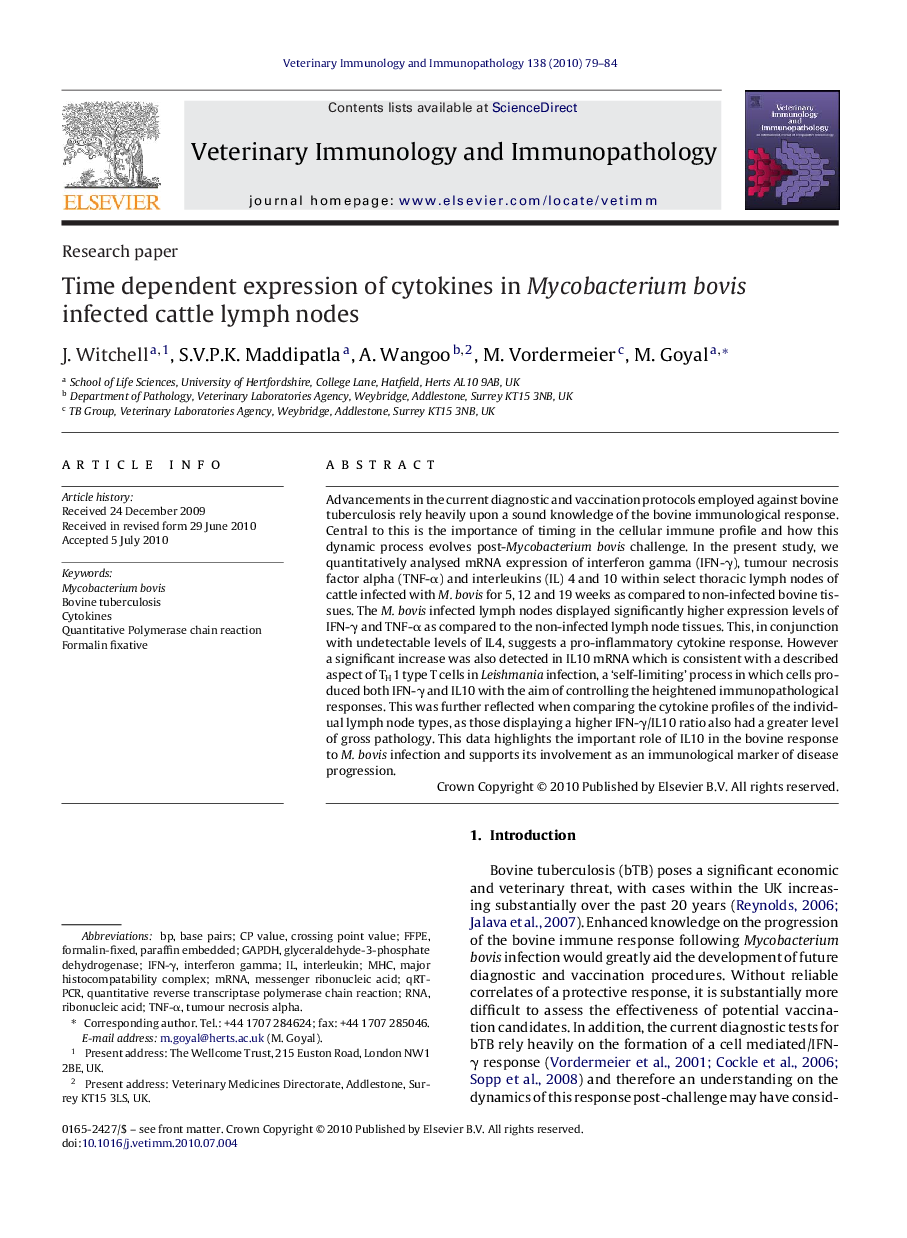| Article ID | Journal | Published Year | Pages | File Type |
|---|---|---|---|---|
| 2462371 | Veterinary Immunology and Immunopathology | 2010 | 6 Pages |
Advancements in the current diagnostic and vaccination protocols employed against bovine tuberculosis rely heavily upon a sound knowledge of the bovine immunological response. Central to this is the importance of timing in the cellular immune profile and how this dynamic process evolves post-Mycobacterium bovis challenge. In the present study, we quantitatively analysed mRNA expression of interferon gamma (IFN-γ), tumour necrosis factor alpha (TNF-α) and interleukins (IL) 4 and 10 within select thoracic lymph nodes of cattle infected with M. bovis for 5, 12 and 19 weeks as compared to non-infected bovine tissues. The M. bovis infected lymph nodes displayed significantly higher expression levels of IFN-γ and TNF-α as compared to the non-infected lymph node tissues. This, in conjunction with undetectable levels of IL4, suggests a pro-inflammatory cytokine response. However a significant increase was also detected in IL10 mRNA which is consistent with a described aspect of TH1 type T cells in Leishmania infection, a ‘self-limiting’ process in which cells produced both IFN-γ and IL10 with the aim of controlling the heightened immunopathological responses. This was further reflected when comparing the cytokine profiles of the individual lymph node types, as those displaying a higher IFN-γ/IL10 ratio also had a greater level of gross pathology. This data highlights the important role of IL10 in the bovine response to M. bovis infection and supports its involvement as an immunological marker of disease progression.
